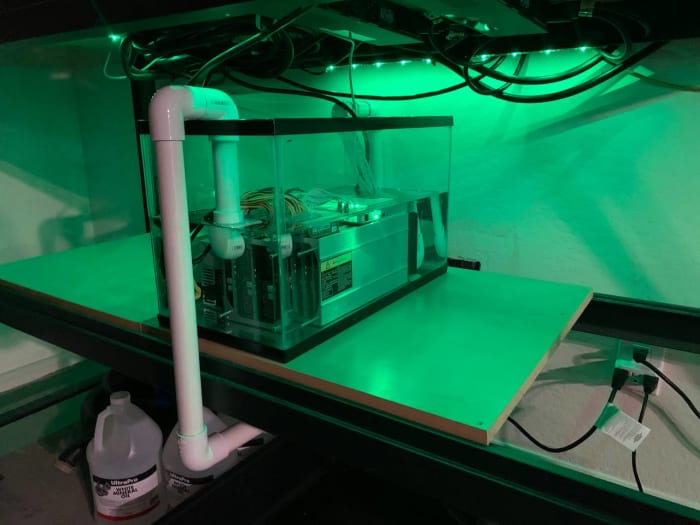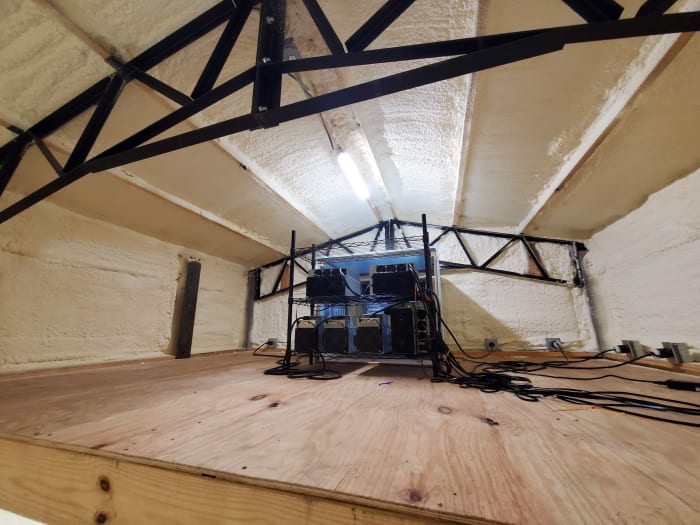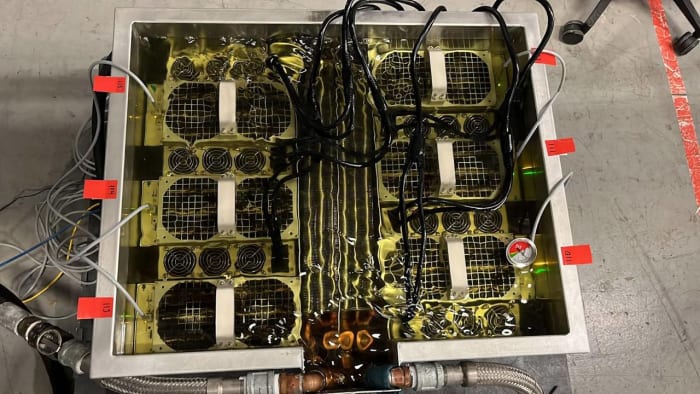This is an opinion piece by Barnminer, a Bitcoiner focused on improving self-sovereignty and integrating home miners.
Bitcoin mining started at home with Satoshi Nakamoto mining the first 50 bitcoins from the genesis block on what would likely be considered an antiquated desktop computer by today’s standards. Mining has since morphed into a multi-billion dollar industry with publicly traded fiat-style mining behemoths with market caps in the billions. This includes big companies such as Marathon Digital Holdings, Riot Blockchain, Hut 8 Mining, Hive Blockchain and others.
This article is not about mining whales or public trust companies. It’s all about the little guys: the men and women who use an Antminer S9 to heat their homes; immersion freaks who drop electronics into dielectric liquid and heat up their swimming pools, hot tubs and radiant floors; even two-megawatt ballers that share rack space for one or two local Bitcoiner siblings.
One of my greatest motivators and mentors started in his garage. He now runs a private farm in a converted industrial building. Once he contacted me in a Telegram group to offer his opinion on my build. He’s the kind of person I want to discuss.
Don’t get me wrong, there are big boys based, but they’re not the topic here. Bitcoin was always designed to be decentralized and accessible to everyone. Anyone who wants to mine should be able to mine. There are big mining conferences for big business and anyone who can buy an $800 ticket to the show, plus funds for airfare, hotel, food and drink. You can easily deposit $2,000 in a two or three day event.
These can be great networking events and there can be actionable educational workshops. However, there is not a single mining event that is truly Bitcoin-only. The leaching of the “super altcoin token bonanza” is evident as soon as you scan your RFID tag to enter the conference. Personally, this year I’d rather buy another ASIC at those lower prices or buy some spare hardware right now.
Enter: Pleb Miner Month
Jon and Sarah DiGiacomo, MaxBitBuyBit and a group of other miners are planning Pleb Miner Month in September.
This will include in-depth interviews to highlight small-scale and home-based miners and the organizations and people who support them. There will be short features like “Bitesize Bitcoin” and “FUD Busters” covering various mining related topics. Throughout the month of September, we will be raffling off mining equipment and accessories.
(Source)
Pleb Miner Month is not only for Bitcoin Plebs, but also for their families. Children are encouraged to get involved; our children will! Kids can ask questions that the Pleb Miner Month team will answer at Ungovernable Misfits. Some of the participants will also see their children produce “Bitesize Bitcoin” records.
Jon DiGiacomo made a statement to start this month of celebrations:
“Nakamoto was obviously the first bitcoin miner; it is estimated that it had up to 48 processors operating with another controlling the operation and/or on standby to protect against a 51% attack. His mining signature was later analyzed by Sergio Demian Lerner, he dubbed Nakamoto’s miner Patoshi and his signature the “Patoshi pattern”. Nakamoto mined solo until he invited Hal Finney and Martti Malmi to join the network. Famously, on January 10, 2009, at 10:33 p.m., Hal Finney was “Running bitcoin”, soon others joined him. It’s fascinating to come back to these first blocks; difficulty of one, block reward 50 BTC, the delicate balance of the 10-minute mark was not quite there yet. By reviewing this short bitcoin history lesson, we shed some light on the fact that Nakamoto was not running a giant mining operation with a cool name, a board, investors, and billions in capital expenditure. He might have been in his basement, his garage, his lab, if you will. He shared the code with associates he knew online. Their goal was to discover blocks and secure the network. He operated because he was passionate about the innovation he built. He was the first miner, he was a miner of the plebs. Sometime in May 2010, Nakamoto turned off Patoshi’s miner, confident that he had passed the torch to the next generation of miners.
“At a record block height later, Bitcoin is still running. Much of the hash rate on the network is coordinated by large mining pools, like F2Pool, Antpool, Binance, and Foundry. Companies like Core Scientific and Marathon Digital control a considerable amount of the Bitcoin network’s hash rate, but 30% of all blocks ever discovered are labeled as discovered by “unknown” and nearly 20% of all blocks classified as ” others” (or extremely small minors). There is something beautifully mysterious about the fact that almost 364,000 blocks, or about half of all blocks discovered throughout the time chain of various block rewards, have been discovered by “anonymous” miners. This fact gives the feeling that all the hash rate is not controlled by pools or large mining operations, that individuals have had a huge contribution to the network, individuals like plebs miners.
“Everyone has their own definition of a bitcoin pleb. It’s not defined by how long you’ve spent on Bitcoin, how many sats in your stack, or how many Twitter followers you have. The same can be said to be a pleb miner. Being a pleb miner is not defined by your total hash rate, the number of watts needed to run your trades, or the complexity of your setup. The title is not something that someone is granting or delivering you a rite of passage. A pleb miner is simply a bitcoiner who mines bitcoin. A pleb miner is dedicated to the bitcoin network, contributing their hash not just for the chance of finding the next block and to receive the block grant and transaction fee or help their pool find the next block for a share of the reward, but hash because they know in their hearts that securing this network is a moral imperative. They exploit because Bit corner is a chance for humanity to restore the sovereignty of the individual and the family. They heed the clarion call that sound money leads to freedom. They mine knowing that for Bitcoin to be decentralized, they have to. Their motives are not to earn more fiat, their motives are to stack more sats and in doing so they innovate and collaborate with other plebs, share their mistakes as well as their triumphs. They spend time on chats offering advice to new miners in the plebs and learning even from the newest in our ranks, they create guides, videos and tutorials. They share photos of their installations, not only to share their innovations and be criticized, but because they are proud of their work, as it should be. Proof of work isn’t just a currency for the plebeian miner, it’s a way of life. Pleb miners come from all walks of life, all places and all experiences. They bring various sets of skills and crafts.
“To be a successful plebs miner, you quickly learn many trades. Mining encompasses several scientific and mathematical concepts: basic physics, electricity, thermodynamics, acoustics and cryptography. Pleb miners quickly become proficient if not masters in skilled trades: electrician, computer, HVAC, plumbing, welding, carpentry and more. The plebeian miner knows that mining is much more than plugging in machines.
“This month is dedicated to you, the miner of the plebs, the loyal defender of the network, the unsung anti-heroes of Bitcoin. No influencers, no thinkbois, just plebs plugging in machines and hashing. The same way Nakamoto and Finney did, there are thousands of city blocks. In this way, we are all Satoshi.

(Source)
This group of small-scale miners come together to provide a month of content to share best mining practices from home. We learn from each other and can pass this knowledge on to others. Enjoy and participate in the Pleb Mining Month. Here are some resources that have helped me along my journey:
Telegram groups related to mining:

(Source)
This is a guest post from Barnminer. The opinions expressed are entirely their own and do not necessarily reflect those of BTC Inc. or Bitcoin Magazine.
